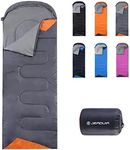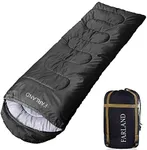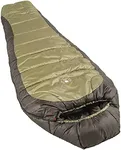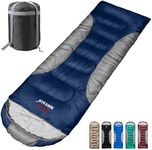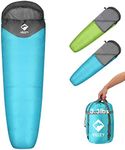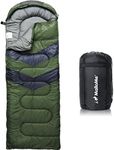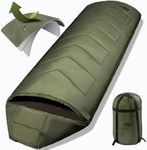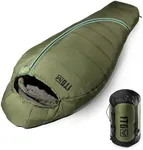Buying Guide for the Best Backpacking Sleeping Bags
Choosing the right backpacking sleeping bag is crucial for ensuring a comfortable and restful night's sleep while you're out in the wilderness. The right sleeping bag will keep you warm, dry, and comfortable, and it should be lightweight and compact enough to fit easily into your backpack. To make the best choice, consider the following key specifications and how they align with your specific needs and preferences.Temperature RatingThe temperature rating of a sleeping bag indicates the lowest temperature at which the bag will keep the average sleeper warm. This is important because it helps you choose a bag that will keep you comfortable in the conditions you expect to encounter. Temperature ratings are usually divided into three categories: summer (above 35°F or 2°C), three-season (10°F to 35°F or -12°C to 2°C), and winter (below 10°F or -12°C). Choose a temperature rating based on the coldest temperatures you expect to face. If you're a cold sleeper, consider a bag rated for slightly colder temperatures than you expect.
Insulation TypeSleeping bags are typically insulated with either down or synthetic materials. Down insulation is lightweight, compressible, and offers excellent warmth-to-weight ratio, making it ideal for backpacking. However, it can lose its insulating properties when wet. Synthetic insulation, on the other hand, is bulkier and heavier but retains warmth even when damp and dries faster. Choose down insulation if you prioritize weight and packability and expect dry conditions. Opt for synthetic insulation if you anticipate wet conditions or are looking for a more budget-friendly option.
WeightThe weight of a sleeping bag is a critical factor for backpackers, as you'll be carrying it on your back for long distances. Lightweight sleeping bags are generally more expensive but can significantly reduce the overall weight of your pack. Sleeping bags can range from ultralight (under 2 pounds or 0.9 kg) to heavier options (over 4 pounds or 1.8 kg). Choose a lighter bag if you prioritize minimizing your pack weight, but ensure it still meets your warmth and comfort needs.
Packed SizePacked size refers to how small a sleeping bag can be compressed for storage in your backpack. This is important for maximizing space in your pack for other gear. Down sleeping bags typically compress smaller than synthetic ones. Look for a sleeping bag with a packed size that fits well within your backpack, leaving room for other essentials. If space is a premium, prioritize a bag with a smaller packed size.
ShapeSleeping bags come in various shapes, including mummy, rectangular, and semi-rectangular. Mummy bags are tapered and snug, providing maximum warmth and minimizing weight, making them ideal for cold weather backpacking. Rectangular bags offer more room to move but are bulkier and less efficient at retaining heat. Semi-rectangular bags strike a balance between the two. Choose a mummy bag for cold weather and weight savings, a rectangular bag for comfort and space, or a semi-rectangular bag for a compromise between warmth and roominess.
Shell and Lining MaterialThe shell and lining materials of a sleeping bag affect its durability, comfort, and water resistance. Common shell materials include ripstop nylon and polyester, which are durable and often treated with a water-repellent finish. Lining materials should be soft and breathable for comfort. Choose a sleeping bag with a durable shell material if you expect rough conditions and prioritize a comfortable lining for a good night's sleep.
Additional FeaturesAdditional features such as hoods, draft collars, and zipper design can enhance the functionality and comfort of a sleeping bag. A hood can provide extra warmth for your head, while draft collars prevent heat from escaping. Zipper design can affect ease of use and ventilation options. Consider these features based on your specific needs, such as extra warmth for cold conditions or easy ventilation for warmer nights.
